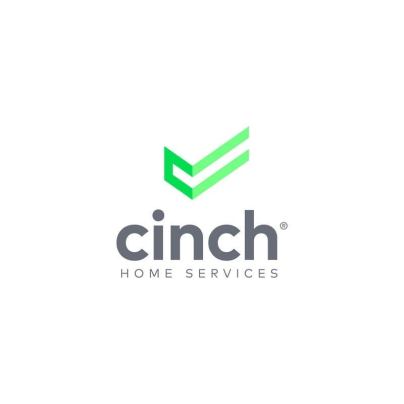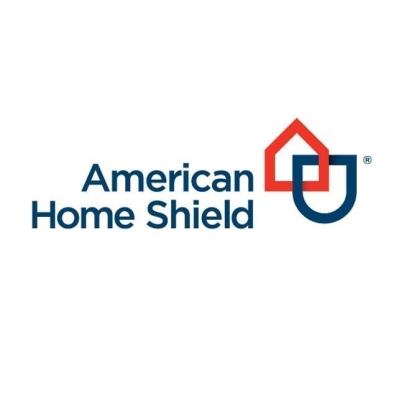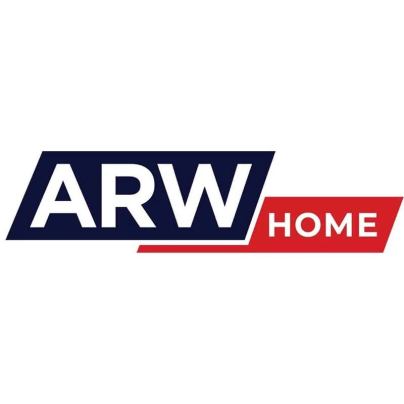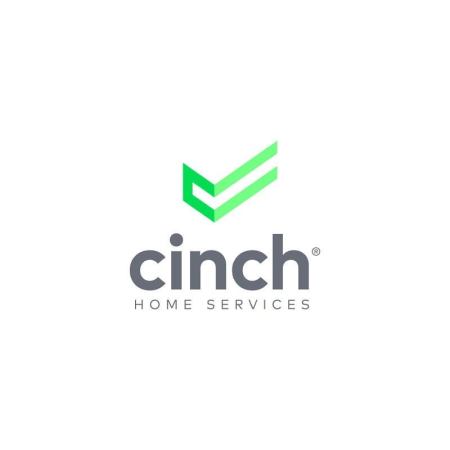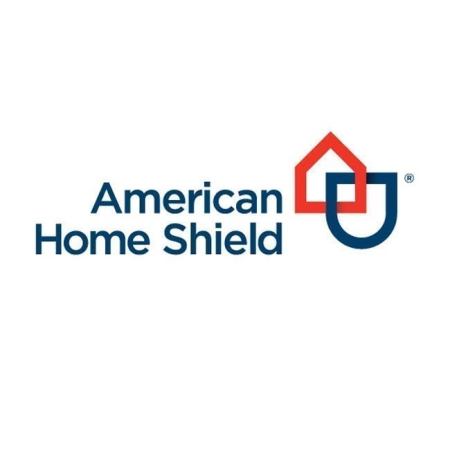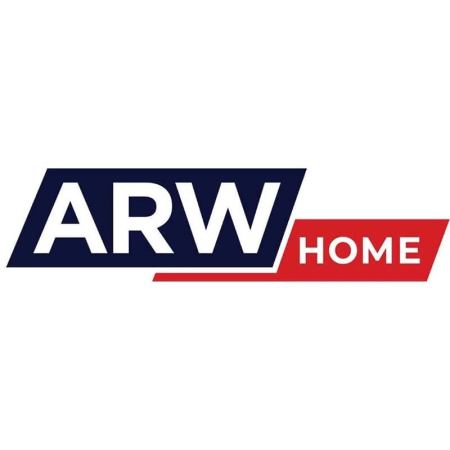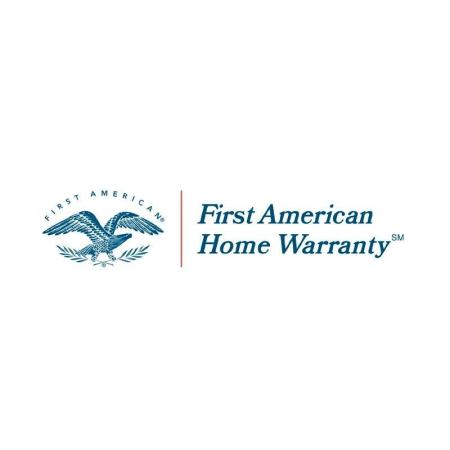
We may earn revenue from the products available on this page and participate in affiliate programs. Learn More ›
From home warranties to home insurance, homeowners have several options they can explore to protect their home and the systems and appliances that keep it running. A standard home warranty provides protection on the home’s major systems and appliances, but depending on the company, homeowners may also be able to secure coverage for certain unknown pre-existing conditions.
Home protection plans are important—but much like every home is unique, every homeowner is also unique, so what works for one household may not work for the next. And unlike insurance, warranty protection will vary among providers. For this reason, finding and choosing the right home warranty can seem overwhelming for homeowners. To simplify the process and help homeowners find the coverage they need without the hassle, this guide has everything they need to know about the best home warranty for pre-existing conditions.
- BEST OVERALL: Cinch Home Services
- RUNNER-UP: American Home Shield
- BEST FOR LOW SERVICE FEES: American Residential Warranty
- BEST ADD-ON COVERAGE: Home Service Club
- ALSO CONSIDER: First American Home Warranty

What to Consider When Choosing One of the Best Home Warranty Companies for Pre-Existing Conditions
Choosing the right home warranty will require homeowners to understand and consider several factors. Every home warranty company has its own definition of standard coverage, its own list of add-on service options, and its own process of determining which pre-existing conditions can be covered. The hoops homeowners might need to jump through to secure this coverage will also vary. So to select the best home warranty for their needs, homeowners will want to consider the following factors.
Service Area
Before considering any other factors, homeowners will need to identify home warranty companies providing coverage in their area. Depending on the company, home warranty service may only be available in certain states, so it’s important for homeowners to pay attention to this factor early on. Otherwise, they could find themselves disappointed when they go to purchase their ideal home warranty and discover it isn’t available in their area, sending them back to the drawing board.
Policies and Plans
When comparing home warranty companies, one of the first factors homeowners will want to consider is each company’s coverage options. This step will include close examination of each provider’s standard coverage and add-on service options, both of which will impact the specific items that can be covered within the home.
Many home warranty companies offer multiple plans and policy tiers, and these plans and policies typically come with varying levels of coverage, from basic to comprehensive. Each plan may cover different systems and appliances in a home, so if a customer is looking for a type of home appliance insurance, they’ll want to make sure the plan they choose covers the types of appliances they have in their home. These different plans may also come with different benefits, with higher-coverage plans providing customers with additional membership perks that add to the total value of the policy. As such, homeowners will want to pay close attention to the policies and plans offered by each provider to ensure their specific coverage needs are met.
Maximum Coverage Limit
In addition to exploring the types of coverage available, homeowners will also want to consider each provider’s scope of coverage from a financial standpoint. Home warranty companies typically enforce a maximum coverage limit, which refers to the total amount the company is willing to pay on covered repairs. Depending on the provider, coverage limits may be applied per item or per term.
Like many of the other things on this list, coverage limits vary significantly among providers—and because this detail can directly impact a homeowner’s out-of-pocket costs, coverage caps will likely be high on their list of factors worth considering.
Average Monthly Rate
Average monthly rates represent the up-front costs of a home warranty. Homeowners pay monthly rates in return for coverage on their home systems and appliances. Each company will advertise its average monthly rate, which can help homeowners get a rough idea of what a policy through that provider might cost them.
However, the specific rate homeowners pay on a home warranty will depend on several factors, including their home’s age, condition, and location as well as the coverage terms they select. Because of this, homeowners will want to look beyond the average monthly rate to be able to accurately budget for a home warranty, obtaining quotes from multiple providers.
Discounts
Cost considerations on a home warranty primarily boil down to two factors: average monthly rates and service fees. But there is one other factor that can significantly impact the total cost of coverage: potential discount opportunities.
Many home warranty providers offer discounts as rewards and incentives, but the specific discounts offered will depend on the company. Some companies may offer discounts to entice new customers to sign up, while others may use them as motivation for customers to pay up-front for annual or multiyear policies. To get the best deal on their home warranty, homeowners will want to keep an eye out for these discount opportunities and the best ways to take advantage of them.
Service Fee
With a home warranty, service fees are paid when the homeowner schedules repairs on their covered home systems and appliances. Because these payments may be considered sporadic when compared with average rates, which are paid monthly, service fees can sometimes be overlooked—but this is an important cost consideration for homeowners to take into account.
Depending on the company, service fees could run anywhere from $50 to $150. Some companies may even offer multiple service fee options, allowing customers to pay less at the time of service if they agree to a higher monthly rate. But whether the service fee is low or high, homeowners will need to be prepared to pay this sudden expense if they want to be able to quickly schedule urgent repairs. For this reason, service fees will need to be considered alongside average rates when homeowners are comparing home warranty companies.
Waiting Period
It’s common procedure for home warranties to begin with a waiting period: a brief window of time between when the policy begins and when the policyholder can first submit a claim. Waiting periods typically last around 30 days, although some companies may be willing to waive this period in certain circumstances, such as if a customer is switching from another home warranty provider. The potential to bypass the waiting period may be appealing to homeowners looking to avoid gaps in their home warranty coverage, so potential customers will want to pay attention to this detail.
Claims Process
When a crucial home system breaks down and urgent repairs are needed, the last thing homeowners want to do is navigate a slow, complicated, or unfamiliar claims process. For example, imagine the heat goes out in the dead of winter. Homeowners who find themselves in this type of situation understandably want their issue resolved as soon as possible.
But depending on their home warranty provider, homeowners could receive a response in as little as a few hours or be kept waiting for several days, significantly impacting the time it takes for repairs to be scheduled and completed. To be prepared to navigate the claims process with ease, homeowners will want to familiarize themselves with each company’s average claims response time and process for selecting repair technicians.
Workmanship Guarantee
Home systems and appliances are complex, so although home warranty companies typically allow homeowners to choose from a trusted, experienced network of contractors for repairs, there may still be occasions where those repairs fail. A workmanship guarantee protects the homeowner in the event that initial repairs fail to resolve the underlying issue with their covered item, saving them from having to pay an additional service fee when additional repair work is needed.
However, the length of the workmanship guarantee can vary widely among providers, with some companies only guaranteeing repairs for 30 days and others covering the work for the entire length of a customer’s policy. Because a shorter workmanship guarantee can result in greater out-of-pocket costs, homeowners will want to make note of the protection offered by each provider during their search.
Our Top Picks
To determine the best home warranty that covers pre-existing conditions, we looked for companies offering this type of protection as part of their standard coverage or as a service add-on, also paying close attention to cost and customer experience factors.
Best Overall
Cinch Home Services
Why It Made the Cut:
With a quick claims-response time and an extended workmanship guarantee, Cinch Home Services could be a great choice for homeowners in need of urgent repairs.
Depending on the specific plan they choose, customers with a home warranty through Cinch Home Services may be able to receive a reimbursement on any homeowners insurance deductibles they pay throughout their home warranty term, up to $1,000 for customers who purchase what the company calls an enhanced policy. This is a unique offering that adds even more value for homeowners combining these two types of home coverage.
When it comes to making a claim, prospective policyholders will want to note that Cinch Home Service’s service fees may be relatively high—but in exchange, Cinch vows to respond to claims within 2 hours of receiving them, assuming the request is received during normal business hours. This quick response time may make the potentially higher service fees worth it for customers having an urgent issue with a covered appliance or home system. In addition, some customers may also encounter higher than average rates, although this will ultimately depend on where the homeowner lives, as the company’s rates can vary significantly depending on the location.
Once a claim has been approved and repairs completed, the company’s workmanship guarantee lasts for 180 days, which is relatively long for any home warranty, but especially one covering pre-existing conditions. Cinch customers who do not submit a service request within the first 9 months of their policy will be eligible to receive other perks, including a free HVAC tune-up valued at up to $100, which can help keep this system running smoothly.
Specs
- Service area: 48 states and Washington, D.C.
- Maximum coverage limit: $3,000
- Average monthly rate: Varies
- Service fee: $100 to $150
- Claims process: Online, phone
- Workmanship guarantee: 180 days
Pros
- Quick response within 2 hours of service request possible
- Long 180-day workmanship guarantee
- Free HVAC tune-up offered
- Homeowners insurance deductible reimbursement offered
Cons
- Rates vary significantly depending on location
- Relatively high $100 to $150 service fee
Runner-Up
American Home Shield
Why It Made the Cut:
Alongside its coverage for pre-existing conditions, American Home Shield’s most unique membership benefits include free or discounted HVAC tune-ups and AC refrigerant refills.
American Home Shield offers coverage for pre-existing conditions, though the specific rates customers pay for this coverage will depend heavily on their location. Because the company’s rates vary among states, AHS may be considered an affordable option in some areas and an expensive one in others. For this reason, homeowners will want to obtain a home warranty quote to get an accurate idea of what a plan through AHS might cost them.
Customers considering American Home Shield will want to note that the company’s workmanship guarantee only runs for 30 days, which is fairly short for a home warranty. Because a workmanship guarantee protects the homeowner in the event that additional repairs are needed, this could result in customers having to pay more than one service fee if they notice a problem with a covered repair after those 30 days are up.
But for many, this brief workmanship guarantee may be offset by the long list of other benefits offered by the company. Across all its policies, American Home Shield sets high limits on HVAC repairs, with even the most basic plan providing $5,000 worth of coverage on this crucial home system. With a higher coverage limit, homeowners will be able to rest easy knowing more expensive repairs can be scheduled without increasing their out-of-pocket costs. Depending on their plan, AHS customers may also be eligible to receive free or discounted HVAC tune-ups, keeping these systems running at optimal levels and preventing more costly issues from occurring. Customers with the most comprehensive plan can also take advantage of unlimited AC refrigerant refills, while other customers can request refills at a discounted price. This unique membership perk can prevent performance issues from arising, keeping air-conditioning systems running efficiently and adding even more value to a policy through AHS.
Specs
- Service area: 49 states and Washington, D.C.
- Maximum coverage limit: $5,000
- Average monthly rate: Varies
- Service fee: $100 or $125
- Claims process: Online, phone
- Workmanship guarantee: 30 days
Pros
- Relatively high $5,000 coverage limit on HVAC repairs
- Free or discounted HVAC tune-ups
- Unlimited or discounted AC refrigerant refills
Cons
- Rates vary significantly depending on location
- Relatively short 30-day workmanship guarantee
Best for Low Service Fees
American Residential Warranty
Why It Made the Cut:
In addition to its impressively low service fees, American Residential Warranty provides its customers with other ways to save, including discounts on new appliances.
American Residential Warranty offers home warranty plans with coverage for pre-existing conditions in every state and Washington, D.C., making this a reliable provider worth considering for homeowners across the country. And with a standard $55 service fee across all its plans, the company may be as affordable as it is accessible, helping customers minimize their out-of-pocket costs when submitting claims.
Depending on the plan a customer chooses, monthly costs through American Residential Warranty may vary, with the company offering four policy tiers at different price points. Average rates sit around $65 per month, which is relatively high, but homeowners who choose a basic plan may pay less, and homeowners seeking more comprehensive coverage could end up paying more.
Homeowners with coverage through American Residential Warranty can also take advantage of the company’s affiliation with major appliance manufacturers to get a discount on new purchases. In some cases, these discounts could help customers save as much as 30 percent on new appliances, including installation and haul-away services. This benefit means added value for policyholders, especially if they find themselves needing to replace an aging appliance.
Specs
- Service area: 50 states and Washington, D.C.
- Maximum coverage limit: $2,500 ($5,000 in aggregate)
- Average monthly rate: $65
- Service fee: $55
- Claims process: Online, phone
- Workmanship guarantee: 30 days labor, 60 days parts
Pros
- Nationwide availability
- Low $55 service fee
- Up to 30 percent discount on new appliances
Cons
- Relatively high $65 average monthly rate
Best Add-On Coverage
Home Service Club
Why It Made the Cut:
Homeowners seeking a long list of service add-ons that can be used to expand the scope of their coverage are likely to find what they’re looking for with Home Service Club.
Homeowners living in areas that aren’t frequently covered by major home warranty companies will be happy to learn that Home Service Club offers home warranty coverage, including coverage for pre-existing conditions, across all 50 states and Washington, D.C., giving the company a nationwide footprint. In addition to its standard coverage, Home Service Club offers numerous service add-on options homeowners can use to customize and expand the scope of their home warranty. These coverage options range from second refrigerators, freezers, oven ranges, and other appliances to roof leaks, jetted bathtubs, and sprinkler systems, so customers have plenty of opportunities to protect their home systems and appliances with Home Service Club.
The company’s contract terms stipulate that plumbing issues are not included in its pre-existing coverage, which is an important limitation for customers to note. But for a home warranty offering any level of protection on pre-existing conditions, the company’s average monthly rate is fairly low at $57. This indicates that Home Service Club customers can get a good value for the price they’re paying, even if certain pre-existing issues may not be covered. But unlike its monthly rates, the company’s service fees may be harder to predict, with rates varying by location.
The Home Service Club’s coverage limits are somewhat low for a home warranty, capped at $2,000 per item. If homeowners find themselves in need of expensive repairs, this could result in having to pay the difference out of pocket. However, the aggregate limit is higher at $5,000, meaning customers can request multiple repairs on their systems and appliances throughout the course of their policy term, up to this $5,000 cap, as long as their individual costs do not exceed the per-item limit.
Specs
- Service area: 50 states and Washington, D.C.
- Maximum coverage limit: $2,000 ($5,000 in aggregate)
- Average monthly rate: $57
- Service fee: Varies
- Claims process: Online, phone
- Workmanship guarantee: 30 days labor, 90 days parts
Pros
- Nationwide availability
- Wide variety of service add-ons
- Low $57 average monthly rate
Cons
- Pre-existing plumbing issues not covered
- Relatively low $2,000 coverage limit per item
- Service fee varies depending on location
Also Consider
First American Home Warranty
Why It Made the Cut:
Low monthly rates and high coverage limits make First American Home Warranty an option worth considering for homeowners within the company’s service area.
First American Home Warranty’s coverage for pre-existing conditions is designed to protect home buyers who have recently purchased a new home, safeguarding them in the event that they discover issues with their home systems or appliances. As such, pre-existing conditions are only covered when the home warranty is purchased as part of a real estate transaction, and therefore current homeowners will not be able to take advantage of this type of home protection.
Still, First American Home Warranty offers affordable monthly rates and high coverage limits, making this an option worth considering. The company’s plans offer a coverage limit of $3,500 on home systems and certain appliances. This already high limit is made even better by the fact that kitchen appliance repairs can be covered for up to $7,000 for customers with the Premium Plan. This is a particularly high limit for a home warranty and could help homeowners cover expensive repairs without increasing their out-of-pocket costs.
These out-of-pocket savings may be even more critical considering First American’s workmanship guarantee, which only lasts 30 days. This brief of a guarantee could open up homeowners to additional service fees in the event that additional repairs are needed more than 30 days after the initial repair work is completed. Homeowners considering First American for their home warranty needs will also want to be aware that the company has some notable coverage gaps, offering home warranties in only 35 states and Washington, D.C., so they will need to check whether their area is serviced before pursuing a policy with this provider. However, First American’s high coverage limit for kitchen appliance repairs and low monthly rate make it a solid choice for customers purchasing a home who want to make sure they’re not paying out of pocket for repairs resulting from unknown pre-existing conditions.
Specs
- Service area: 35 states and Washington, D.C.
- Maximum coverage limit: $7,000 (for kitchen appliance repairs); $3,500 (for home system repairs)
- Average monthly rate: $57
- Service fee: $75 to $125
- Claims process: Online, phone
- Workmanship guarantee: 30 days
Pros
- High $7,000 coverage limit available for kitchen appliance repairs
- Low $57 average monthly rate
Cons
- Relatively small service area covering 35 states and Washington, D.C.
- Pre-existing conditions only covered on home warranties purchased through real estate transactions
- Short 30-day workmanship guarantee
Our Verdict
We gave the award for Best Overall to Cinch Home Services because of its rapid claims- response time, lengthy workmanship guarantee, and potential for reimbursement on homeowners insurance costs. The Runner-Up award goes to American Home Shield because of its HVAC offerings, including high coverage limits and free or discounted tune-ups, among other membership benefits.
How We Chose the Best Home Warranty Companies for Pre-Existing Conditions
To build this list of the best home warranty companies offering coverage for pre-existing conditions, we considered the coverage area of each provider as well as the standard terms of coverage associated with each policy, including both the type of repairs covered and any applicable coverage limits. With each company, attention was paid to what defines a pre-existing condition and what steps the homeowner might need to take to have these issues repaired.
Cost considerations were also important, so our research included a close examination of average monthly rates, service fees, and discount opportunities to gain a full understanding of the total cost of coverage. Finally, we studied each company’s claims process, from average response times to workmanship guarantees, considering how these factors might impact the customer experience.
Before You Choose One of the Best Home Warranty Companies for Pre-Existing Conditions
Every household needs a home protection plan, but the specific steps homeowners take to protect their home may depend on its age, condition, and location as well as the individual homeowner’s aversion to risk. Each of these factors will play a role in helping homeowners answer the question: Do I need a home warranty? But they will also help in building a list of home warranty priorities, which will be unique to each homeowner and can guide them in their search.
While some homeowners may be seeking a specific type of coverage, such as the best home warranty for plumbing systems, others may be basing their search on property factors, looking for the best home warranties for a rental property, the best home warranties for an older home, and so on. To find a home warranty that will properly suit their needs, homeowners will want to identify these priorities ahead of time.
Cost of Opting for One of the Best Home Warranty Companies for Pre-Existing Conditions
For most homeowners, cost considerations are top of mind when choosing a home warranty. Household budgets are made up of many monthly costs, with a home warranty being just one of them, so it’s understandable that homeowners would want to find the coverage they need at an affordable price.
When it comes to home warranty costs, there are two main factors for customers to consider: average rates and service fees. While rates are paid monthly or annually, service fees are paid when the policyholder schedules a repair. On average, a home warranty with standard coverage costs around $600 annually, but the exact amount a homeowner pays for their home warranty coverage will depend on their home’s age, condition, and location as well as the specific coverage options selected.
The Advantages of Opting for One of the Best Home Warranty Companies for Pre-Existing Conditions
There are many reasons a home warranty can be worth it. Whether homeowners opt for this type of coverage due to aging appliances, out-of-date home systems, or an overarching desire to be protected from surprise expenses, home warranties can have many advantages— especially when they include coverage for pre-existing conditions.
Among other benefits, homeowners who choose a policy from one of the best home warranty companies will enjoy the following advantages.
- Peace of mind knowing their home’s systems and appliances are protected if they experience issues or break down;
- Easier household budgeting due to predictable monthly costs and service fees, as opposed to paying repair costs out of pocket; and
- Other membership perks, from free system maintenance to discounted appliances, depending on the provider.
FAQs
Home warranties can be complex, with each company offering its own coverage options with its own terms at its own cost. For this reason, it makes sense that people might have some lingering questions surrounding the best home warranties for pre-existing conditions. To help in their search, homeowners will want to familiarize themselves with the following frequently asked questions and their answers.
Q. Do home warranties cover pre-existing conditions?
While some home warranties may offer coverage for unknown pre-existing conditions, this type of coverage is not always included, so homeowners seeking it will need to choose their provider carefully.
Q. What does a home warranty cover usually?
A home warranty typically covers a home’s major systems and appliances, from the refrigerator to the HVAC system.
Q. Do all home warranties require you to perform a home inspection?
Most home warranties do not require a home inspection, though some providers will require a visual inspection to provide coverage for pre-existing conditions.
Q. Does a home warranty company have a right to cancel my plan due to pre-existing conditions?
Each home warranty company may have its own conditions for canceling a customer’s policy, so it’s important for homeowners to read the terms and conditions carefully.
Q. What are undetectable pre-existing conditions?
Undetectable pre-existing conditions are defects and failures that cannot be seen through a basic visual examination or mechanical test.
Q. Will a home warranty cover the replacement of household appliances?
A home warranty covers the repair or replacement of household appliances, so if a covered appliance cannot be fixed, a home appliance warranty will pay for its replacement, assuming its cost is within the coverage limit.
